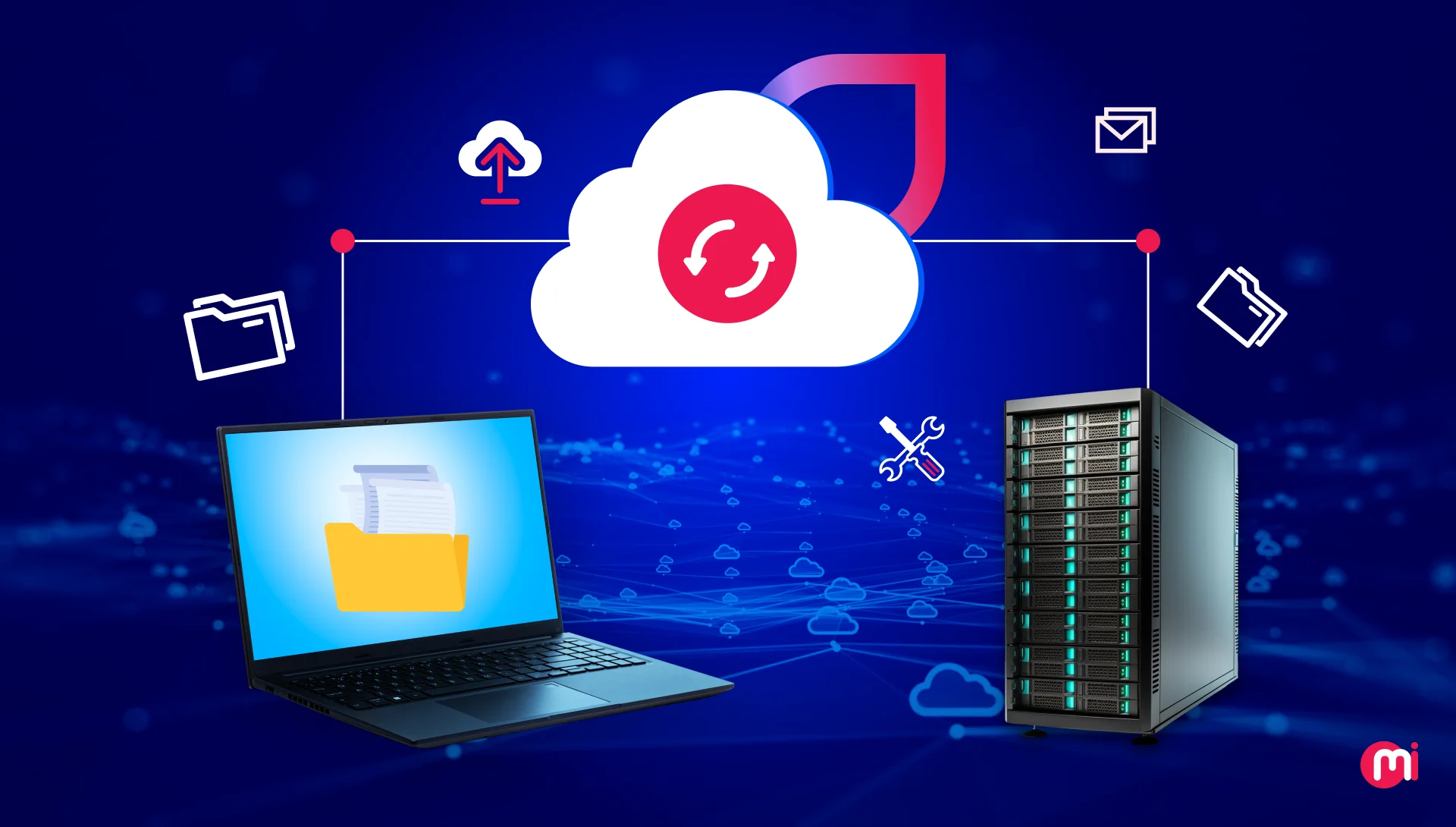Top Enterprise App Development Challenges And Their Solutions
- Software
- July 10, 2025
Enterprise app development challenges can range from integration issues and scalability concerns to security risks and user adoption. This blog explores common obstacles businesses face during enterprise app development and highlights proven solutions to overcome them. Whether it’s choosing the right tech stack, ensuring seamless integration, or maintaining performance at scale, this guide offers practical insights to help you navigate the complexities of enterprise software development successfully.
Enterprise applications power smarter operations, enable quick decisions, and keep teams connected no matter how large or distributed they become. Yet despite their promise, many enterprise software projects struggle to deliver on goals, often falling short because systems don’t scale well, integrations break down, or the software simply fails to align with business needs.
Building enterprise apps isn’t like rolling out a simple tool. With legacy systems to tie in, strict compliance demands, and diverse users across departments, there’s a lot that can go wrong. That’s why it’s essential to tackle enterprise app development challenges head-on with strategies that actually work.
This blog explores enterprise app development challenges and shares actionable solutions rooted in real-world experience, helping businesses leverage technology efficiently.

Navigate Enterprise App Development Challenges With Effective Solutions
The frequently encountered enterprise app development challenges include shifting business requirements, resource & skill gaps, technical issues, integration with legacy systems and third-party services, scalability & performance, security violations, enterprise data management & migration, data storage concerns, user experience & adoption, and post-development & maintenance issues.
Here’s a breakdown of key challenges and their solutions:
1. Shifting Business Requirements
One of the most persistent challenges in enterprise app development is shifting business requirements. These changes often stem from evolving app development trends, customer demands, user feedback, or compliance updates.
Frequent changes in requirements during application development can disrupt the project timeline, inflate budgets, and introduce inconsistencies in design or functionality. This challenge is particularly critical in large enterprises where multiple departments rely on the app’s capabilities and expect it to adapt to real-time business needs.
Solution
To effectively navigate this challenge, implement agile software development methodologies. Agile breaks the project into smaller iterations (sprints), allowing for continuous review, feedback, and adjustment. Teams can accommodate new or altered requirements without derailing progress.
Agile will also promote cross-functional and transparent change management processes, ensuring the application remains aligned with business goals, even if these goals evolve.
2. Resource & Skill Gaps
Resource and skill gaps are significant enterprise app development challenges, as many organizations struggle to find in-house experts who can build and maintain complex applications using emerging technologies or specialized frameworks.
This lack of expertise often causes delays, lowers app quality, and makes it harder to scale or add new features. As technology evolves rapidly, internal teams find it even more difficult to stay updated with evolving software development trends, new tools, and best practices.
Solution
To solve this challenge, organizations should hire dedicated developers with the right skills and experience. Hiring professionals through outsourcing, staff augmentation, or direct recruitment helps fill critical gaps and adds valuable technical expertise to the team. These developers also offer industry-specific knowledge that speeds up development and ensures high standards.
Organizations can also work with external development firms to access a wider talent pool and maintain project momentum. While training internal staff remains important for long-term success, hiring application developers provides the fastest and most effective way to overcome resource and skill shortages in enterprise app development.
3. Technical Issues
Technical issues are among the major enterprise app development challenges that you might have to face during the process. These issues include system crashes, performance bottlenecks, integration failures, or bugs that disrupt the user experience and reduce productivity.
Such issues typically arise from outdated technology stacks, poor code quality, or lack of proper testing during development. If developers don’t identify and fix these problems early, they can escalate quickly and cause costly delays or operational failures.
Solution
To address this challenge, development teams must take a proactive approach. They should adopt robust software testing best practices, such as automated testing, continuous integration, and regular code reviews, to catch and resolve issues before deployment. Choosing modern, well-supported technologies and frameworks also helps prevent compatibility and performance problems.
When internal expertise falls short, organizations should hire application developers with strong technical backgrounds to troubleshoot and optimize system performance. Hired teams can reduce technical issues and deliver a reliable, high-performing enterprise application.
4. Integration with Legacy Systems & Third-Party Services
Integrating legacy systems and third-party services is a complex enterprise app development challenge. Many organizations still rely on outdated infrastructure that lacks compatibility with modern technologies, making integration difficult, time-consuming, and prone to errors.
At the same time, businesses increasingly depend on external APIs and third-party tools for critical functions like payments, analytics, and communication. When systems don’t communicate effectively, it can lead to data silos, operational inefficiencies, and security risks.
Solution
To tackle this challenge, the development team must assess the existing infrastructure and identify integration points. Using middleware, API gateways, and microservices architecture can help bridge the gap between legacy and modern systems.
Developers should also implement secure data exchange protocols and follow app development best practices for managing third-party dependencies. Also make an investment in enterprise application modernization to upgrade legacy systems. With these initiatives, teams can ensure smooth communication across systems, reduce downtime, and improve the overall efficiency of the enterprise application.
Apart from it, availing application modernization services from a reliable company to upgrade legacy systems and boost growth can help as well.
5. Scalability & Performance
Without proper planning, apps can slow down, crash under high traffic, or become expensive to maintain. These issues often arise when developers don’t design with future growth in mind or when infrastructure can’t adapt to changing demands.
Solution
To tackle this challenge, development teams should design applications using scalable architectures such as microservices and cloud engineering solutions. These approaches allow systems to handle increased loads by distributing processes efficiently and scaling components independently.
Teams should also implement performance optimization techniques, including load balancing, database indexing, caching strategies, and asynchronous processing. Continuous performance testing helps identify bottlenecks early, allowing teams to fine-tune the app before it impacts users.
By planning for growth from the outset and monitoring system behavior in real-time, organizations can ensure their applications deliver consistent, high-quality performance at any scale.
6. Security Violations
Security violations pose a serious threat in enterprise app development, as breaches can lead to data loss, legal consequences, and damage to an organization’s reputation.
These violations often occur when teams overlook secure coding practices, misconfigure systems, or fail to update software regularly. As enterprise apps handle sensitive data and often integrate with multiple external systems, even a small vulnerability can expose the entire infrastructure.
Solution
To prevent security violations, development teams must embed security at every stage of the software development life cycle (SDLC). They should follow secure coding standards, conduct regular vulnerability assessments, and use tools for static and dynamic code analysis. Implementing strong authentication protocols, encrypting data in transit and at rest, and applying role-based access controls further strengthen the app’s defense.
7. Enterprise Data Management & Migration
Enterprise data management and migration is one of the significant enterprise app development challenges, especially if organizations deal with large volumes of structured and unstructured data spread across all systems.
Poorly planned migration can result in data loss, inconsistencies, or prolonged downtime, while weak data management practices can lead to compliance issues and operational inefficiencies. These risks increase when systems lack standardization or when teams attempt to migrate data without a clear strategy.
Solution
To address these enterprise app development challenges, teams must start by conducting a comprehensive audit of existing data sources, formats, and dependencies. They should cleanse and standardize data before migration to ensure accuracy and consistency. Using automated data migration tools, establishing data governance policies, and creating backup and rollback plans helps reduce risk and maintain continuity.
Throughout the process, developers should validate data integrity and monitor performance to detect and fix issues early and ensure a smooth transition while preserving the quality, security, and usability of their enterprise data.
8. Data Storage Concerns
Organizations must handle growing volumes of data while ensuring accessibility, security, and cost-efficiency. Poor storage planning can lead to system slowdowns, increased operational costs, and difficulty retrieving or managing information.
These issues become more complex when dealing with real-time data processing, regulatory compliance, and integration with multiple data sources.
Solution
To manage this challenge effectively, development teams should choose scalable cloud migration solutions that offer flexibility and high availability. They should also implement data tiering strategies to separate frequently accessed data from archival information, optimizing both performance and application development cost structure.
Encryption, access controls, and regular audits are essential to protect sensitive data and meet compliance standards. Additionally, incorporating backup and disaster recovery plans ensures data resilience in case of failures. Using this aligning storage architecture with business needs and future growth, organizations can maintain data reliability, security, and efficiency throughout the app’s lifecycle.
9. User Experience & Adoption
Poor user experience often leads to low adoption rates, especially in enterprise environments where employees resist switching from familiar tools. Complex interfaces, unclear workflows, and lack of personalization can frustrate users and hinder productivity. This challenge becomes even more significant when the app needs to serve diverse user roles across departments.
Solution
To improve adoption, teams should prioritize user-centered design from the start. Conducting user research, mapping real workflows, and building intuitive interfaces tailored to different user roles ensures relevance and ease of use. Continuous feedback through testing, training programs, and in-app guidance supports smoother onboarding.
A well-designed app that solves actual user pain points not only improves satisfaction but also drives long-term engagement and usage across the organization.
10. Post Development & Maintenance Issues
After deployment, many enterprise apps face challenges such as bugs, outdated features, compatibility issues, and user support demands. Without a structured maintenance strategy, performance may degrade over time, and security vulnerabilities can go unaddressed, leading to increased operational risk and user dissatisfaction.
Solution
To manage these issues effectively, teams should establish a long-term maintenance plan that includes regular updates, performance monitoring, and bug fixes. Implementing automated monitoring tools helps identify issues in real time, while user feedback channels guide feature improvements. Clear ownership, version control, and scalable support processes ensure the app remains reliable, secure, and aligned with evolving business needs.
Conclusion
Enterprise app development challenges demand a proactive and strategic approach. Successful teams align technology with business goals, respond quickly to changing needs, and focus relentlessly on user experience.
By hiring a reliable enterprise software development company, leveraging the right talent, tools, and development practices, organizations build scalable, secure, and user-friendly applications that drive real value. The goal isn’t just to own a working app but to create a solution that evolves with the business, empowers users, and supports long-term growth.

Need an Enterprise Application? Let MindInventory Build It For You
MindInventory is a trusted enterprise application development company that empowers businesses with scalable, secure, and high-performing software development solutions tailored to enterprise needs. We deliver custom enterprise-grade applications that are both user-centric and future-ready.
From automating complex workflows to enabling real-time analytics and cloud integration, our team leverages modern technologies like AI, ML, microservices, and DevOps to ensure your application supports growth and adapts to changing business demands. We prioritize flexibility, security, and performance at every stage of the development cycle.
Over the years, we’ve delivered impactful enterprise solutions across diverse industries. Such as:
- building an intelligent construction safety chatbot to automate safety checks and compliance.
It streamlined reporting, reduced risks, and boosted on-site safety awareness by 71%, fostering a stronger safety-first culture. - creating a robust platform like Synthesia to generate AI videos. Our solution gave them a standout product that simplified content creation, enhanced business growth, and delivered 30% more engagement for their users.
Our collaboration on a flight booking app for a leading airline like AirAsia optimized their user experience and streamlined complex booking flows, resulting in improved customer engagement and operational agility. These solutions not only addressed specific business challenges but also positioned our clients for long-term digital success.
FAQs on Enterprise Application Development
Enterprise application development is the process of designing, building, and deploying software tailored to meet the complex needs of large organizations. These applications support business functions like operations, finance, HR, and customer management. They often integrate with existing systems and handle large volumes of data securely and help improve efficiency, scalability, and decision-making across the enterprise.
Enterprise software development is the creation of customized software solutions designed to support and optimize large-scale business operations. It focuses on building robust, scalable, and secure applications that integrate with existing systems. These solutions address specific organizational needs such as workflow automation, data management, and interdepartmental collaboration.
Enterprise applications come in various forms, each serving a specific function within a large organization. The four main types include Customer Relationship Management (CRM), Enterprise Resource Planning (ERP), Supply Chain Management (SCM), and Business Intelligence (BI). These systems work together to streamline operations, enhance data visibility, and support strategic growth.
An application is a software program designed to perform specific tasks for users, such as note-taking, messaging, or gaming. In contrast, an enterprise application is a large-scale software system built to support business processes and operations across an entire organization. They handle complex functions, like customer relationship management, resource planning, and data integration.
Real-life examples of enterprise applications include tools like Airtable, Asana, Cisco Meraki, Dropbox, Evernote, HubSpot, etc. These applications help large businesses handle complex tasks, like managing customers, streamlining supply chains, analyzing data, and keeping employees connected, all at scale.
The use of enterprise applications is to manage and optimize key business operations such as finance, HR, supply chain, customer relationships, and data analytics. They help organizations improve workflow efficiency, ensure data consistency, and support informed decision-making across departments.













